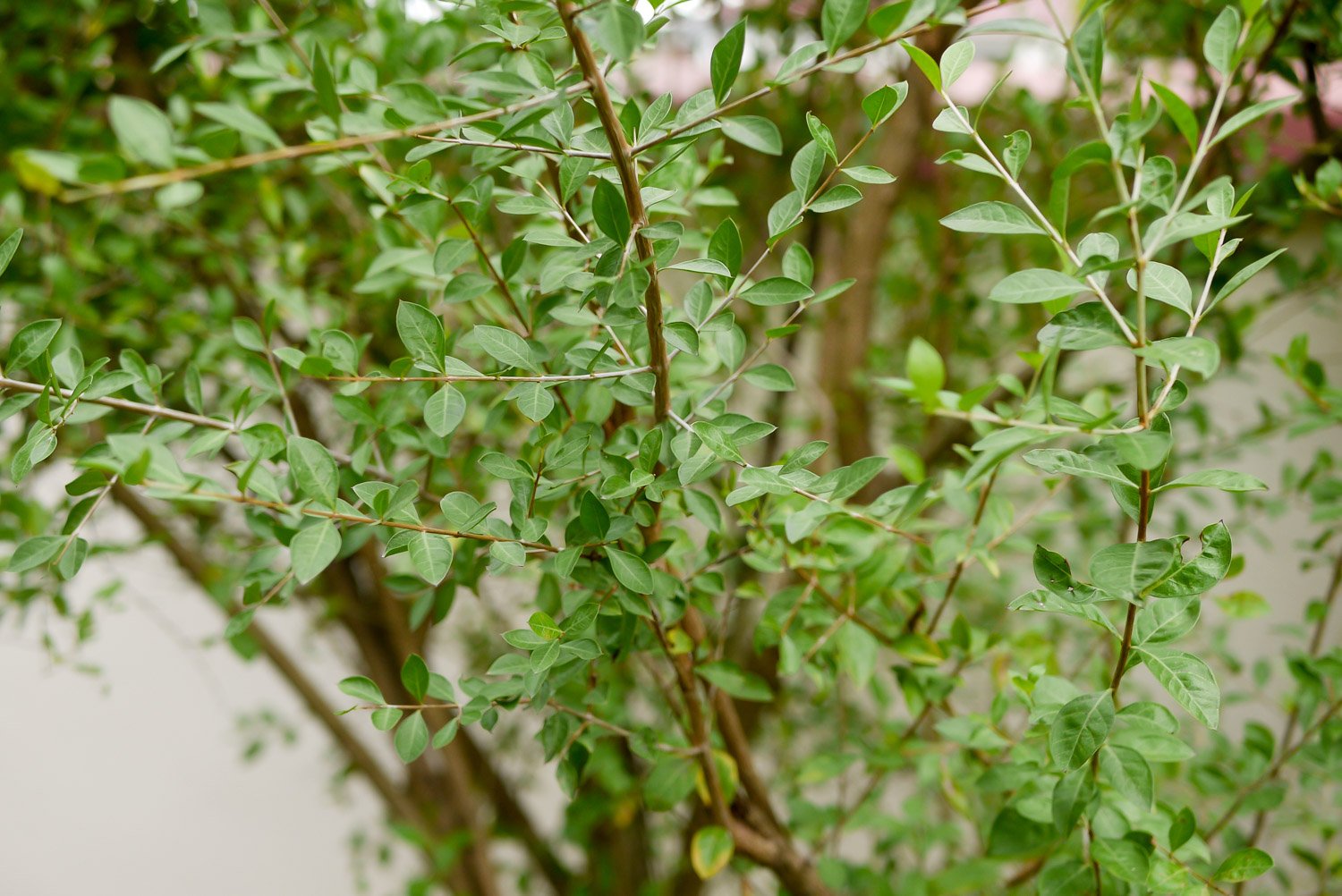Warning About Imitation Henna
Not all “henna” you see is the real thing!
Real henna is a plant, and is safe and gentle. It’s been used therapeutically and cosmetically for thousands of years. However, it’s also very perishable and requires skill and time to prepare.
Unfortunately, some companies add dangerous ingredients in order get around this problem - what we call “imitation henna”. These have caused burns, scarring, and damage to internal organs. In extreme cases, they have even caused death.
As responsible henna artists, it’s our responsibility is to educate about the differences so everyone can enjoy safe, real henna!
This is real henna
Henna is a shrub / small tree (botanical name lawsonia inermis). It grows in arid parts of the world like North Africa, India, Pakistan, the Middle East and beyond.
Just like blueberries or beets will stain your skin, the leaves of the tree stain too! The difference is that henna lasts a week or two. That’s because the actual dye molecule in henna is smaller, so it can soak deeper into your skin.
Henna artists make a paste out of henna using the dried, ground up leaves of the tree. Recipes vary (here’s ours), but usually use water, tea or lemon juice and a small amount of essential oil.
Once mixed, it only lasts a few days at room temperature. It must be used right away or frozen.
These are not henna!
Since real henna is so perishable and requires skill to prepare, companies that want to cash in on henna have taken some dangerous shortcuts.
Their “imitation henna” products contain industrial dyes and solvents which are shelf-stable. Unfortunately, these ingredients are toxic and can cause severe reactions.
Even though most of these are illegal, current US labeling laws don’t require the companies to disclose these ingredients.
These products often cause reactions, and consumers think they’re just “allergic” to henna when it’s not henna at all.
The fact is, it’s not an allergy, it’s a chemical burn.
“I didn’t react, so it’s safe for me”
Unfortunately, that’s not true.
Some of the additives are: gasoline, kerosene, lighter fluid, paint thinner, benzene, and PPD (p-phenylenediamine or paraphenylenediamine)*. These can cause invisible, internal damage.
PPD is a common chemical in hair dye; but the concentration is typically less than 3% (also, the box instructs you not to allow it to touch your scalp).
However, PPD in imitation "henna" products has been tested at 10-40% concentration! It has caused severe blistering, permanent scarring, organ damage and even death.
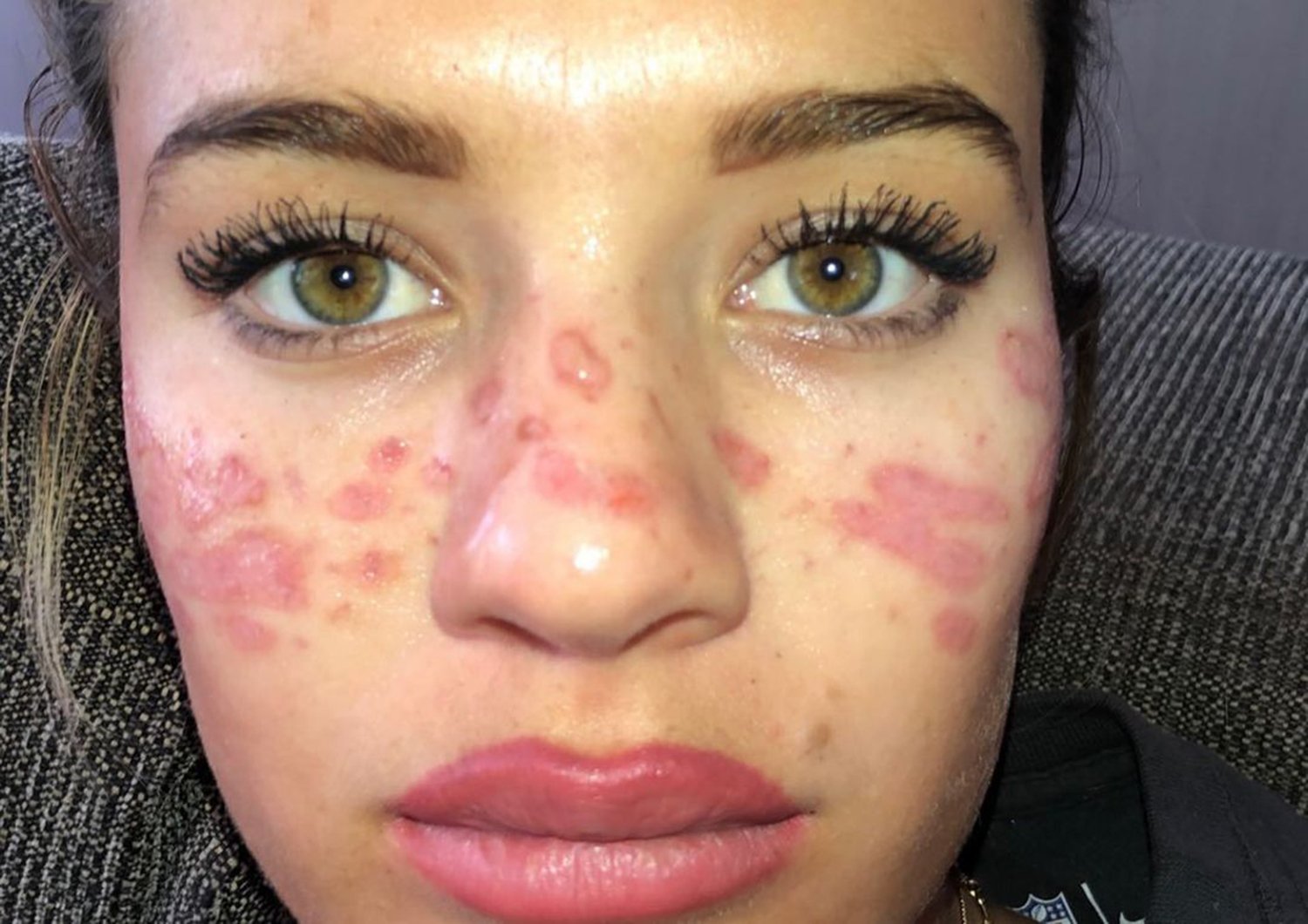

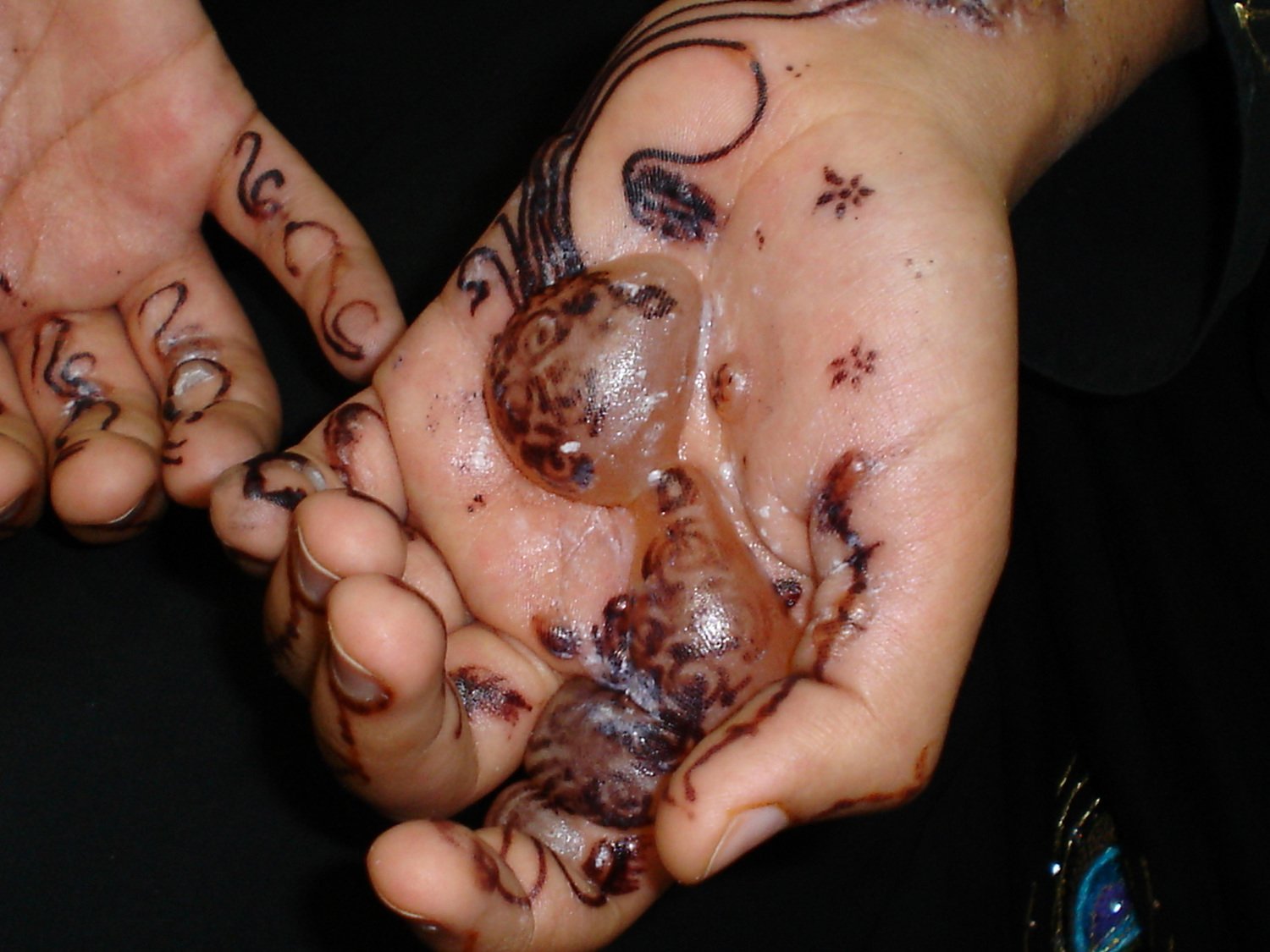
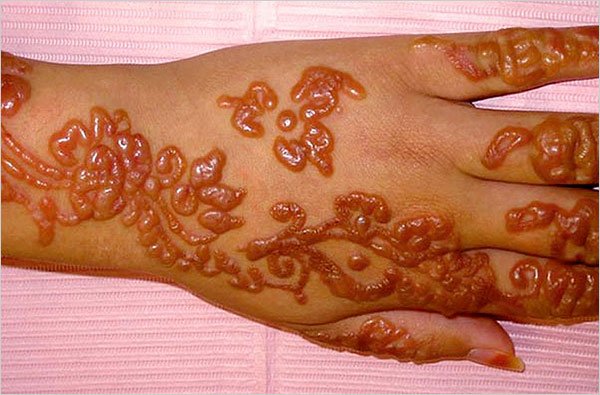

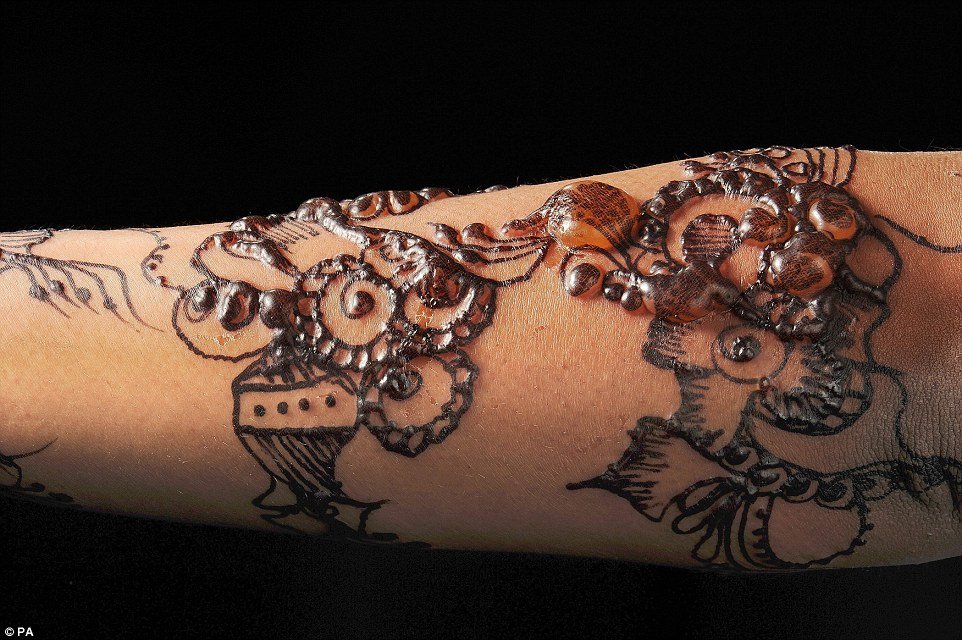
* PPD is particularly dangerous because it’s a sensitizer. That means repeat exposures increase your chance of a serious reaction even if you've never reacted before.
How to tell the difference
Our #1 tip for safe henna:
Always buy from & hire ICNHA-certified artists
You can look them up at www.icnha.org. Yes, we’re certified!
REMEMBER
Imitation products might say "natural" or "no chemicals"; but due to lack of regulation, manufacturers can print anything they want on the label (including a modified ingredients list) without risk of legal action.
That leaves it up to the consumer to figure it out for themselves. Use the information below, or download our printable checklist, so that you can determine for yourself if the product is safe, natural henna.
I BOUGHT THE WRONG STUFF! WHAT DO I DO?
If you are experiencing a reaction to imitation henna products, contact your doctor immediately. I am not a doctor and cannot provide medical advice. It’s important for you to get in touch with a medical professional and let them know you used a product with unknown ingredients, and may have had exposure to PPD (paraphenylenediamine / p-phenylenediamine). They need this information in order to properly evaluate and treat you.
If you just used one of these products (but aren’t reacting), wash it off with soap and water immediately. Take pictures of the front and back labels in case you have a reaction, then throw away the product. Do not use it for crafting or any other purpose. Even the fumes can be harmful. Then, find an ICNHA-certified artist (like us) to purchase from.
Additional Reading
CDC NIOSH Guide to Chemical Hazards: http://www.cdc.gov/niosh/npg/npgd0495.html
American Contact Dermatitis Society's "Allergen of the Year" 2006: http://www.contactderm.org/i4a/pages/index.cfm?pageid=3467
EPA Hazard Summary: http://www.epa.gov/airtoxics/hlthef/phenylen.html
FDA consumer warning: http://www.fda.gov/ForConsumers/ConsumerUpdates/ucm343932.htm
UK NHS consumer warning: https://www.nhs.uk/live-well/healthy-body/black-henna-neutral-henna-ppd-dangers/
Learn more about the dangers of "black henna" en espanol
News articles
2025 - Warning from Indian Dermatologist about Adulterated Henna
2025 - Mom exposes son’s horrific henna allergic reaction: ‘Common unfortunately’
2021 - Australian TV star Tilly Whitfeld says TikTok DIY freckle hack gave her scarring and vision loss
2019 - Twin 11 yr old boys suffer chemical burns after getting “black henna” in Egypt
2018 - 20,000 Imitation henna cones recalled in Canada due to chemical burns caused by phenol additive
2018 - 22 year old man suffers extensive neck and facial swelling following PPD exposure
2017 - 7 year old girl burned and scarred by imitation "henna"
2017 - 22 yr old woman suffers severe burns following exposure to chemical "henna"
2016 - 38 year old woman dies from PPD-tainted henna in Libya, the third death this year
2015 - Woman dies after repeated PPD exposure from chemical "henna" and hair dyes
2015 - 16 year old Mary Bates permanently scarred after PPD exposure from chemical "henna"
2014 - 3 year old boy suffered anaphylactic shock after PPD exposure from chemical "henna"
2011 - 17 year old Tabatha McCourt dies after PPD exposure in hair dye
2011 - Woman hospitalized following PPD exposure in hair dye
Was this helpful? Leave a comment below or send us a message!


